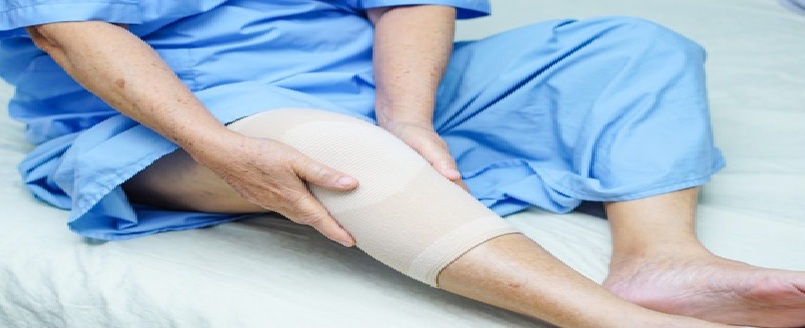
Knee replacement surgery is one of the most common and costly surgical procedures. As per the American Academy of Orthopaedic Surgeons (AAOS), 90 per cent of people who undergo this surgery feel significant results immediately after the operation and are able to continue with their daily chores. The results are evident because most expert orthopaedic surgeons like Dr L. Tomar use computer-assisted navigation systems to perform their operation with a high level of accuracy and precision.But, despite following the best of the procedures, the patient is expected to be careful post the surgery as there might they might face some inconvenience.
Knee Swelling
Swelling of the knee post the surgery could be one of the reasons for discomfort. This could be a result of persistent inflammation within the joint, bleeding within the joint, or pain in the calf and swelling extending down the leg. There could also be difficulty placing weight on the leg. Using simple steps like ice application, compression bandages, and elevating the foot can help reduce this inflammation, swelling and extreme pain.
Stiffness
The knee could get stiff due to persistent swelling or due to scar tissue formation around the joint. A physiotherapist can help in suggesting some exercises such as bending of knee correctly and the right proportion, which could help in getting rid of the stiffness. Some suggested exercise which one can do in supervision includes performing frequent ankle pumps and bending the knee as advised. A person can take 3 to 6 weeks before resuming the normal activities, including walking, climbing stairs and driving, however, it is still important to step out and do some form of exercises. One could also use a cane to walk, but, it is important to discuss the best way to use a cane for best results.
Contagious Infection
A surgery which involves stitches are prone to infection sometimes around the incisions, or it can occur within the knee joint, which is considered to be serious. While surgeons always use sterilized instruments and also clean the operated area and also share post-surgery cleaning method with the patient, there are chances of infection which could be detected through signs of fever, chills, or sweats. Having bacteria within the knee joint can cause significant damage to the cartilage of the joint, and thus treatment is recommended immediately. Your doctor will prescribe antibiotics before, during, and after the operation to help prevent any form of infection. Yet, a deeper form of infection around the knee joint will involve additional surgery. Hence, it is best to religiously follow the doctor’s advice related to the procedure of cleaning the operated body part post the surgery. Some of these hygienic steps include keeping the incision site clean and dry. Even if the surgeon places a bandage on the operated area, one should only remove it after discussing with the doctor.
Blood Clotting
The risk of blood clotting can occur in anyone’s body and is not necessarily a factor of an unsuccessful surgery. Once, a doctor detects a blot clot post-surgery, he or she will prescribe blood thinning medication or ways to improve blood circulation in the body. Blood clots could typically occur within two weeks of surgery or may occur within a few hours or even in the operating room. Clots caused by DVT could delay your release from the hospital by a few days. The blood clots should not be taken up lightly as otherwise, it could lead to clotting disorders in the body leading to further damage.
The risks associated with knee replacement surgery are not life-threatening and can be sorted with proper medication or treatment. Before and after any surgery, the best possible advice is given by the patient’s doctor only and it is important to follow all instructions properly so that the results of the surgery are good. It is important to not ignore any kind of persistent pain or sign post-surgery. It is always better to address the complications before time, rather than holding on to the uncomfortable feeling. It is also important to note that not all knee surgeries lead to risks and the majority of them help an individual to lead a healthy and active life.
Recent Posts
- Deciding Between Total Knee Replacement and Minimally-Invasive Partial Knee Replacement
- Long Term Impacts of Arthroscopic Surgery
- What to Expect After a Joint Replacement Surgery?
- Ways to Avoid Risks Post a Knee Replacement Surgery
- Five Things to Know If You Are Planning a Hip Replacement Surgery
- The Rising Bone Health Issues in Aging Population
- Knee Replacement Advancements Leading to Better Patient Satisfaction
- Simultaneous bilateral hip replacement more satisfactory and better rehabilitation
- Knee replacement as successful as Hip replacement
